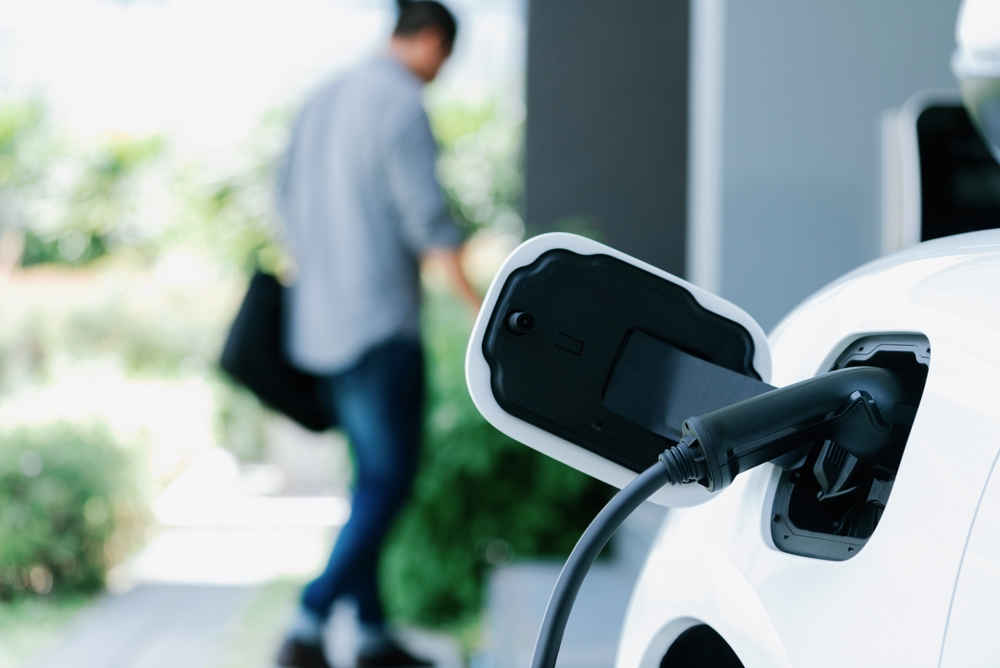Home Charging FAQs
Getting your first EV is an exciting experience, though it does come with a few considerations. While charging an EV might seem tricky at first, it’s actually pretty simple.
Tusker has put together a helpful guide that answers the most common questions about EV charging. This resource is here to clear up any confusion, explain the jargon, and make sure you can hit the road with ease.
Do I need a home charger?
No, it’s perfectly easy to own an EV if you don’t have a home charger. The UK’s public charging network already has more charging points available than there are petrol stations, so there is no shortage of places to charge your car. Handily, many of these public charging points are often found in supermarkets, shopping centres and even gym carparks, so it’s possible to charge your car while you get on with other activities or park overnight on the street.
How do I charge my EV at home?
If you have your own driveway, then there are two main ways to charge your EV. As everyone in the UK will have electrical sockets in their homes, plugging your car into a wall socket is a very simple way of charging an EV and requires nothing more than a cable. However, UK home electricity will only be able to charge an EV at a rate of 3kWh, which means that it will be slow to add power.
A faster way to charge your EV is with a wall mounted home charger, which we will explain in more detail below.
What is the best home charger for EVs?
Wall mounted home chargers are a more robust and faster way of charging your EV at home than a three- pin plug. And if you can charge an EV at home, this is the recommended solution. These units charge at more than double the rate of a three-pin plug, at up to 22kWh, which means that your EV can charge fully overnight or in as little as 4 hours, depending on the car being charged.

Does a Tesla need a Tesla home charger?
If you have a Tesla, it can be charged from a normal household socket via its mobile connector, however, for fast and convenient charging, a Tesla Wall Connector will allow you to schedule charging times and will even charge other brands of EVs if needed.
How do I install an EV charger at home?
It’s important to get home charging system installed by a professional electrician. Handily, most charge point manufacturers will have a selection of recommended installers, many of whom will be happy to talk you through the available options to recommend the best charger and charging location for you.
What is the difference between a tethered and untethered charger?
When choosing a home charger, you will need to decide between a tethered, or an untethered charger. The difference between the two is simple – with a tethered charger, the charging cable is permanently attached to the unit, and with an untethered unit, the cable can be removed.
Which one you should choose comes down to personal preference, as some people like the simplicity of a tethered charger used for a single car with no need to store a cable. Other people like the flexibility of untethered charging, particularly if they want to charge more than one type of EV.
What is the quickest way to charge my EV?
If you are out and about and want to charge your EV away from home, you will find that most public charging is 22kWh. These are often found in places like supermarkets, car parks and at motorway service stations.
Many public chargers also have the option of 50kWh fast charging, which can fill your battery up to 80% quite quickly (in as little as 40 minutes). These chargers are perfect for topping up on long journeys, or while you do some shopping, although the last 20% of charging takes place more slowly, to preserve your battery health.
The best way of finding a fast 22kWh charger, or a 50kWh rapid charger when you are away from home is with a charging app, such as Zap-Map which can show you the nearest charging point to you, the power of the charger, and even if its available.
Find out more about Home Charging